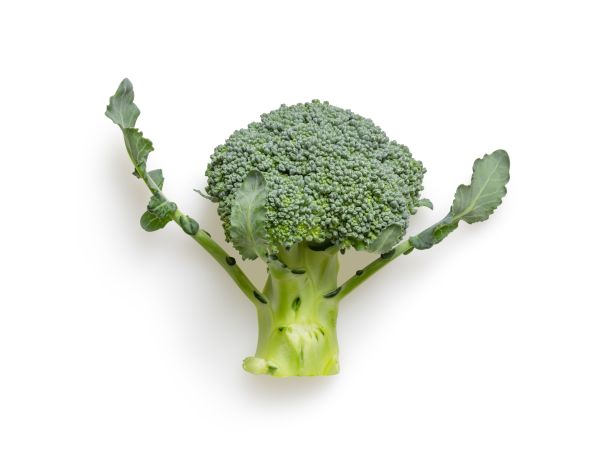How to Eat Your Vegetables

I once knew a man transformed by vegetables. When I first met him, he claimed he could barely stand to eat them, and rarely did so on his own initiative.
Six months later we both ended up at the same party, and I wouldn’t have recognized him if he didn’t recognize me. He looked like a fashion model.
During our conversation I brought up the vegetable question, and he told me that he had conceded to eating them at every meal and that they weren’t that bad. He still didn’t love them but he recognized their superpowers.
I always liked vegetables, or at least I thought I did. I began to question this belief when I started experimenting with the old suggestion of “filling half the plate with vegetables” at each meal. The idea is that it’s easy not to overdo the rich, non-vegetable foods as long as they’re at least matched, if not dwarfed, by a large serving of veggies. The vegetables are so voluminous and calorically sparse that it’s hard to overindulge in anything else, namely the dense and delicious carbs, meats, cheeses, and sauces that sit beside the pile of plants.
It’s an elegant solution, although not for everyone, to the so-called “omnivore’s dilemma” — what to eat, and how much, in order to stay healthy and satiated.
So far I’ve found these half-veg meals to be filling enough that I don’t need to rely on willpower not to overconsume the richer foods. I don’t hit an afternoon wall. My skin looks better. I crave snacks less. My whole system seems grateful. Superpowers, I tell you.
In preparing so many varieties of veg, however, I quickly noticed I was always adding something to make the vegetables “good.” Salads must be dressed of course, maybe with some toasted sunflower seeds, or perhaps a judicious crumble of feta or blue cheese. Steamed cabbage is much more palatable with a quarter-pat of butter and some garlic. Broccoli is best roasted, after tossing with olive oil. (Seriously try it.)
I’ve always identified as a vegetable lover, yet I apparently seldom just eat a vegetable. Even my humble cucumber slices seem to need salt and pepper, or maybe some balsamic dressing. It’s as though something in me assumes vegetables must be improved in some way, at least a bit, before I deign to eat them.
Or maybe it’s in the culture. If you look up vegetable recipes, or just look around at what people eat, it’s clear that this is the customary way to eat vegetables. You don’t just eat them. You sneak them past the taste buds by way of disguise. You literally dress the nutritious foods in delicious foods — salt at the very least, but more often a coating of oil, sprinklings of nuts, cheeses, dried fruit. Anything but their naked selves.
Making vegetables delicious is all fine and good, but then we’re right back to the game of trying to strike a “balance” between deliciousness and nutritiousness (a dusting of parmesan on the broccoli is reasonable; but shredded cheddar is too much, etc). This tension spoils the elegant “fill half your plate with veg” heuristic, because the veg half is always smuggling in stuff from the other half.
It probably sounds like I’m making too much of this vegetable management stuff, and maybe I am, but this problem isn’t precisely about vegetables. Modernity has us used to the idea that almost everything can be made comforting or stimulating, and that nothing major is being traded off to do that. We can drive everywhere, and not sacrifice our health or longevity to do so. We can browse world news all day and not have our heads explode. We can make every instance of eating enjoyable, and not be taking on grave new risks.
The modern belief that food is primarily about enjoyment is so pervasive that society rejects purely utilitarian eating, which is something every other animal does. You would get strange looks, for example, or maybe a full panel interrogation, if you sat down with bare broccoli on your plate, or a salad with no dressing. Yet the dutiful daily consumption of unadorned vegetables might be as close to a magic pill for many of our modern diet and nutrition challenges as we’re ever going to find.
What I’m advocating is the subversive practice of eating a plant just to get it into your body, at least once a day. In a society that rejects any food that doesn’t entertain while it nourishes, this is a revolutionary act.
(I do have a friend who eats lettuce straight from the head on the way home from the farmer’s market, but she’s one in a million.)
In other areas of life, we accept that adulthood necessitates doing a certain amount of stuff that’s tolerable but neither pleasant nor interesting, and which we do only for its situational benefits. Somehow, with the act of eating, it’s got to please us too. It’s as though each meal has to win at two food games at once: it must successfully nourish (or at least not harm you too badly), and successfully stimulate/entertain. If you Google “nourishing things to eat,” you will find loads of elaborately-dressed salads, sesame kale chips, and power bowls, but nobody saying “hey just eat a cucumber.”
What I’m doing now is making sure that at least one thing on my plate is pure, unadorned vegetable. I eat it with the same spirit with which I would change a lightbulb or wipe the kitchen counter. Such tasks are completely tolerable experiences, with worthwhile benefits; I’m glad I can do them, and on some level they feel good to do, but they don’t entertain or stimulate me, and that’s perfectly fine. It also means I don’t have to worry about doing them too much.
In other words, I’m learning to simply eat my vegetables. It’s exhilarating to put a raw broccoli floret directly into your mouth, confronting fully its tannic juices and bitter enzymes, and its complete indifference to pleasing you, in order to consume it purely for the nourishment, with no attempt to make the experience enjoyable.
For once, if only for part of the meal, you’re not trying to play and win both food games at once, and the relief is palpable.
***
Photos by Mockup Graphics and David Cain

